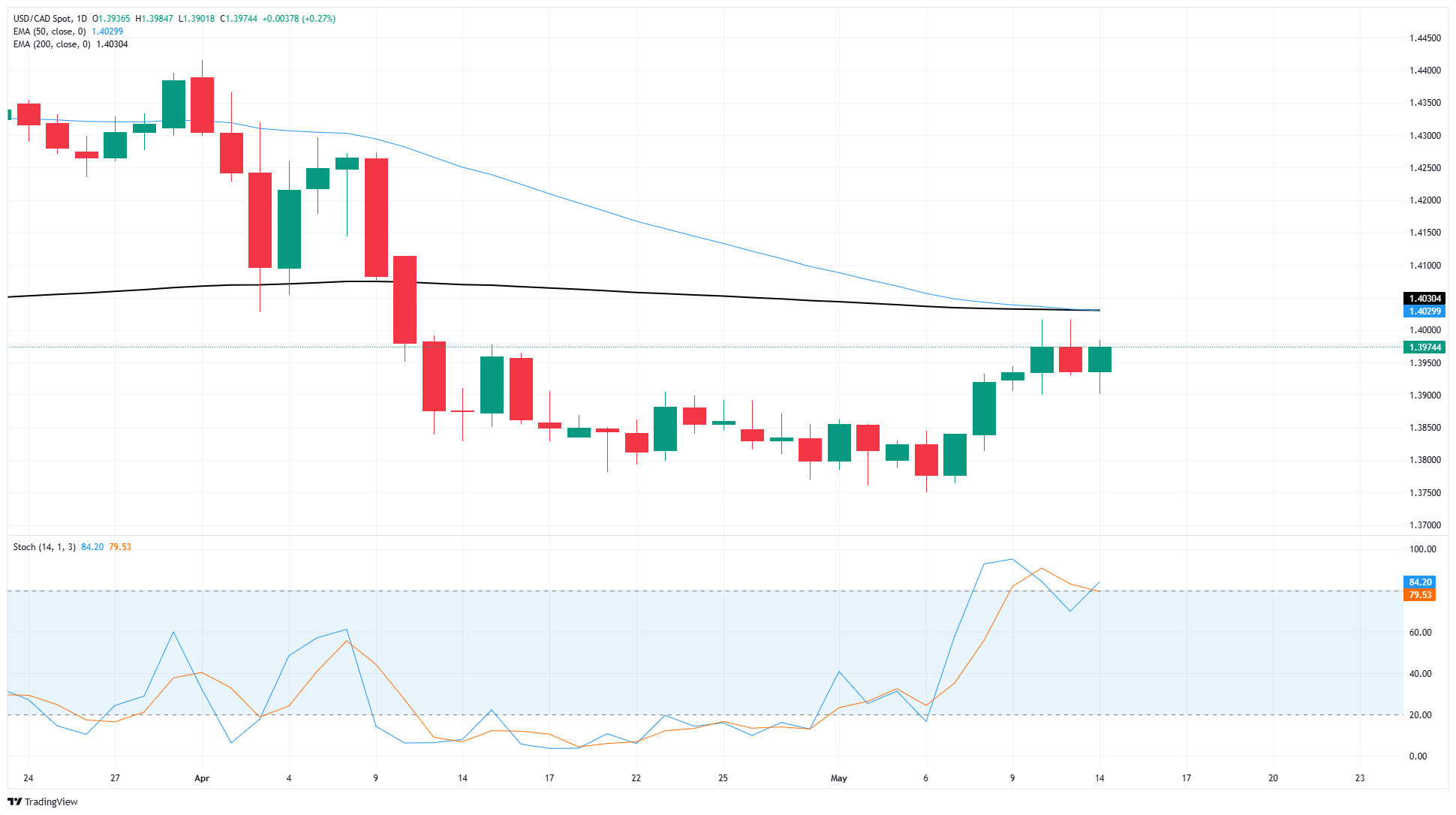Canadian Dollar eases back on data-light Wednesday
- The Canadian Dollar dipped against the Greenback, threatening a whipsaw pattern.
- Back-and-forth action on the USD/CAD chart sees bids pinned to the 200-day EMA.
- The economic calendar is mostly devoid of Canadian data this week, as well as a mid-week lull.
The Canadian Dollar (CAD) lost a little bit of ground against the US Dollar (USD) on Wednesday, paring away Tuesday’s limited gains and putting USD/CAD back in touch range of the 200-day Exponential Moving Average (EMA) as the Dollar-Loonie pairing struggles to find fresh momentum and slumps into long-term averages.
This week’s economic data docket has a notable lack of meaningful Canadian releases, and global markets are broadly focusing on Trump-driven headlines for the time being. Next week, Loonie traders will get a smattering of mid-tier Canadian data, with Consumer Price Index (CPI) figures being the key print.
Daily digest market movers: Markets swim in a tight circle as traders await a reason to move
- The Canadian Dollar shed a little over one quarter of one percent against the US Dollar, erasing Tuesday’s gains and keeping USD/CAD trapped just below 1.4000.
- FX markets are taking a breather between key US inflation prints this week.
- Better-than-expected US Consumer Price Index (CPI) inflation figures from April helped bolster market sentiment, and US Producer Producer Price Index (PPI) inflation looms ahead on Thursday.
- Despite still-improving inflation metrics, the party could soon be over as US tariff impacts begin leaking into headline data in the coming weeks and months.
- US Retail Sales are also due on Thursday, as well as key consumer sentiment figures on Friday, and are poised to dominate market flows to wrap up the back half of the trading week.
Canadian Dollar price forecast
The Canadian Dollar is caught in a near-term congestion trap against the US Dollar. USD/CAD is hamstrung just south of two key technical levels: the 1.4000 handle, and the 200-day Exponential Moving Average (EMA) near 1.4030. With a firm technical ceiling priced in just above current price action, it will be increasingly difficult for Greenback bulls to push the pair back into the bullish side.
USD/CAD daily chart

Canadian Dollar FAQs
The key factors driving the Canadian Dollar (CAD) are the level of interest rates set by the Bank of Canada (BoC), the price of Oil, Canada’s largest export, the health of its economy, inflation and the Trade Balance, which is the difference between the value of Canada’s exports versus its imports. Other factors include market sentiment – whether investors are taking on more risky assets (risk-on) or seeking safe-havens (risk-off) – with risk-on being CAD-positive. As its largest trading partner, the health of the US economy is also a key factor influencing the Canadian Dollar.
The Bank of Canada (BoC) has a significant influence on the Canadian Dollar by setting the level of interest rates that banks can lend to one another. This influences the level of interest rates for everyone. The main goal of the BoC is to maintain inflation at 1-3% by adjusting interest rates up or down. Relatively higher interest rates tend to be positive for the CAD. The Bank of Canada can also use quantitative easing and tightening to influence credit conditions, with the former CAD-negative and the latter CAD-positive.
The price of Oil is a key factor impacting the value of the Canadian Dollar. Petroleum is Canada’s biggest export, so Oil price tends to have an immediate impact on the CAD value. Generally, if Oil price rises CAD also goes up, as aggregate demand for the currency increases. The opposite is the case if the price of Oil falls. Higher Oil prices also tend to result in a greater likelihood of a positive Trade Balance, which is also supportive of the CAD.
While inflation had always traditionally been thought of as a negative factor for a currency since it lowers the value of money, the opposite has actually been the case in modern times with the relaxation of cross-border capital controls. Higher inflation tends to lead central banks to put up interest rates which attracts more capital inflows from global investors seeking a lucrative place to keep their money. This increases demand for the local currency, which in Canada’s case is the Canadian Dollar.
Macroeconomic data releases gauge the health of the economy and can have an impact on the Canadian Dollar. Indicators such as GDP, Manufacturing and Services PMIs, employment, and consumer sentiment surveys can all influence the direction of the CAD. A strong economy is good for the Canadian Dollar. Not only does it attract more foreign investment but it may encourage the Bank of Canada to put up interest rates, leading to a stronger currency. If economic data is weak, however, the CAD is likely to fall.

